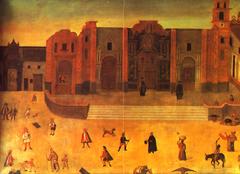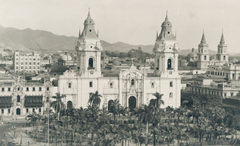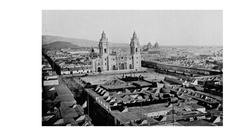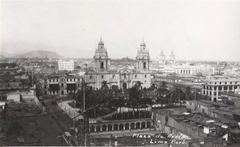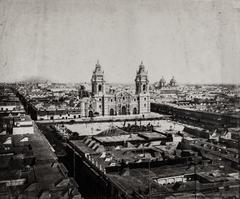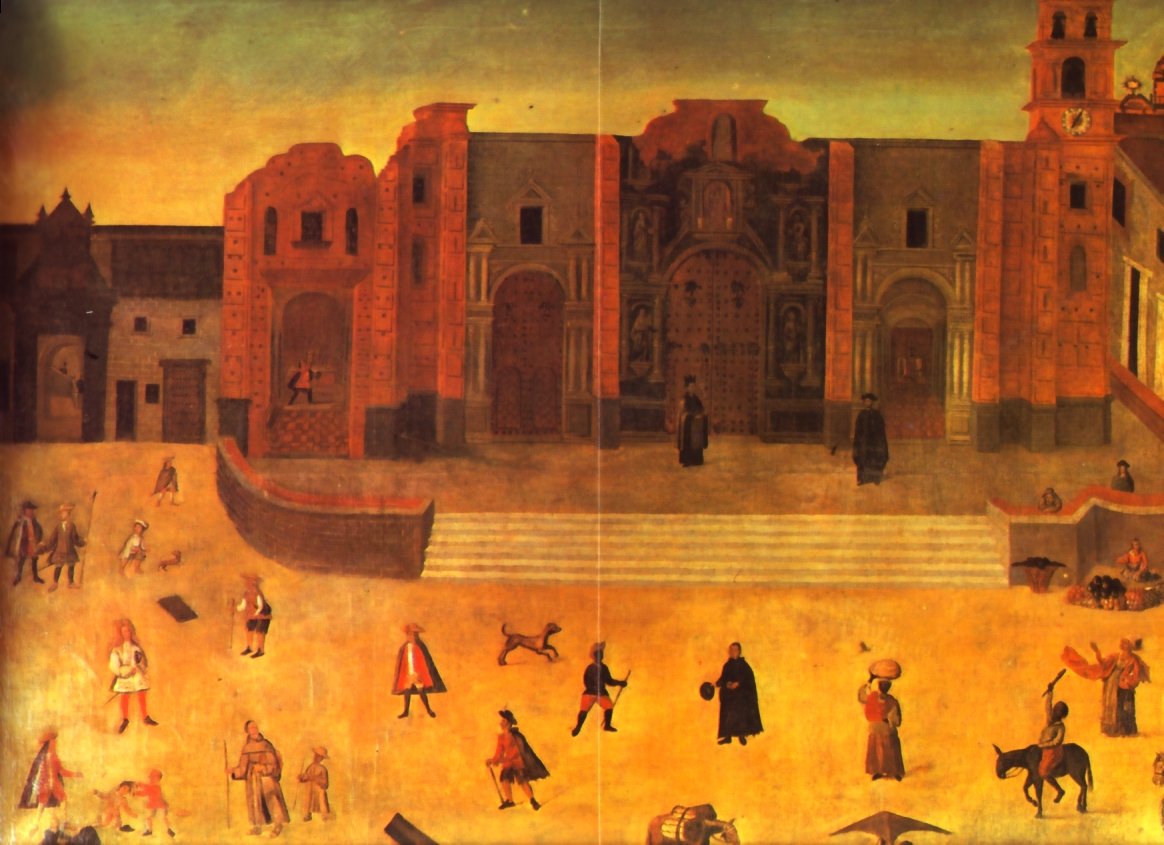
Sagrario Metropolitano de Lima: Visiting Hours, Tickets, and Comprehensive Travel Guide
Date: 15/06/2025
Introduction
The Sagrario Metropolitano de Lima, located in the heart of the city’s historic center, stands as a symbol of Peru’s colonial heritage, religious tradition, and architectural grandeur. Built in tandem with Lima’s founding in 1535, this church not only served as the city’s first parish but also became a central hub for Catholic worship and social life within the Viceroyalty of Peru. Its strategic location on Plaza Mayor, alongside the Lima Cathedral and Archbishop’s Palace, reflects the Spanish colonial practice of concentrating religious and administrative power in one vibrant square (elsagrariodelima.org, wikipedia).
Renowned for its fusion of Spanish Baroque, Neoclassical, and indigenous artistic influences, the Sagrario Metropolitano is both a place of devotion and a cultural landmark, recognized as part of Lima’s UNESCO World Heritage-listed historic center (freewalkingtoursperu.com). This guide provides detailed information on visiting hours, ticketing, accessibility, nearby attractions, and the church’s historical and artistic legacy—ensuring you have everything you need for a meaningful visit (misstourist.com, wanderlog.com).
Table of Contents
- Historical Overview and Foundations
- Architectural and Artistic Legacy
- Role in Lima’s Colonial Urban Fabric
- Endurance and Conservation Through the Centuries
- Visiting Information: Hours, Tickets, and Accessibility
- Special Events and Festivals
- Nearby Landmarks and Attractions
- Photography and Visual Resources
- FAQs: Plan Your Visit
- Summary and Final Travel Recommendations
- References
Historical Overview and Foundations
Founded in 1535, the Sagrario Metropolitano de Lima was established as the first parish church of the new colonial capital, serving both the spiritual needs of the settlers and asserting the Catholic Church’s authority (elsagrariodelima.org). Construction, initiated in the 16th century and completed during the 17th century, utilized traditional materials such as adobe and quincha (a cane and mud lattice), which provided resilience against Lima’s frequent earthquakes (freewalkingtoursperu.com).
The church quickly became a cornerstone in Lima’s social and religious life, preserving vital civil records and providing a venue for major religious ceremonies. Its proximity to key government and religious buildings underlines its historical role at the intersection of faith and civic authority (lacgeo.com).
Architectural and Artistic Legacy
The Sagrario Metropolitano is celebrated for its elaborate Baroque and Neoclassical architecture, enriched by indigenous craftsmanship. The façade, featuring Neo-Plateresque ornamentation and distinctive estípite columns, stands as a testament to colonial artistry (dialnet.unirioja.es). Inside, the golden main altar, polychrome statues, and intricate retablos were crafted by local mestizo and European artisans, blending European iconography with Andean motifs (iglesiadelpilar.com.ar).
Highlights include:
- The Neo-Plateresque façade, with its sculpted saints, angels, and heraldic emblems.
- The main golden altar housing the custodia (monstrance) with consecrated hosts.
- Vaulted ceilings adorned with stucco medallions and biblical frescoes.
- Side chapels featuring works by artists such as Francisco Albán, whose paintings combine European Baroque influences with local themes.
Role in Lima’s Colonial Urban Fabric
Situated on Plaza Mayor, alongside the Lima Cathedral and Archbishop’s Palace, the Sagrario Metropolitano was integral to colonial urban design, reinforcing religious, political, and administrative centers within a single square (wikipedia). The church also housed important city archives, including baptism, marriage, and death records of prominent Limeños.
The arrival of various religious orders led to further construction of churches and institutions, with the Sagrario playing a leading role in evangelization and community organization (lacgeo.com).
Endurance and Conservation Through the Centuries
Lima’s seismic activity necessitated architectural adaptations, including the quincha construction technique, which helped the Sagrario survive multiple earthquakes. Conservation efforts have preserved its colonial character, and in 1988, Lima’s historic center (including the Sagrario) gained UNESCO World Heritage status (freewalkingtoursperu.com). The church remains an active parish and a living monument to Lima’s evolving identity.
Visiting Information: Hours, Tickets, and Accessibility
Location: Eastern side of Plaza Mayor, adjacent to the Cathedral of Lima.
Visiting Hours:
- Monday to Saturday: 9:00 AM–5:00 PM
- Sunday: 9:00 AM–1:00 PM (restricted due to services)
Hours may vary during major religious events—check the official parish or Cathedral website for the latest updates.
Tickets and Admission:
- Entry is free of charge; donations are welcome to support preservation (trip.com).
- Admission to the Sagrario is often included with the Cathedral of Lima ticket (approx. 10–15 soles; discounts for students/seniors).
Accessibility:
- The church is accessible for visitors with limited mobility, with ramps at the main entrance and wide aisles. Some historic features may limit access to certain areas—contact staff for assistance (GCatholic).
Guided Tours:
- Available in Spanish and often English. Guided tours provide deep insights into the church’s art and history and can be arranged via the Cathedral’s ticket office or local tour operators (misstourist.com).
Visitor Etiquette:
- Dress modestly (shoulders and knees covered).
- Remove hats inside.
- Maintain silence and respect during services.
- Non-flash photography is generally permitted outside of Mass or special ceremonies.
Special Events and Festivals
The Sagrario Metropolitano hosts regular Mass, weddings, and key religious festivals such as Holy Week, Corpus Christi, and the Feast of the Lord of Miracles. During these times, access for tourists may be restricted, but visitors can observe unique Peruvian Catholic traditions (wanderlog.com).
Nearby Landmarks and Attractions
The church’s location on Plaza Mayor places it within walking distance of Lima’s main colonial attractions:
- Cathedral of Lima: Renowned for its architecture and housing Francisco Pizarro’s tomb.
- Archbishop’s Palace: Notable for its ornate balconies.
- Government Palace: The seat of Peru’s executive branch.
- Basilica and Convent of San Francisco: Famous for its catacombs and library (UNESCO).
- Plaza San Martín: Early 20th-century architecture, a short walk away.
Photography and Visual Resources
- Personal photography is permitted (no flash); professional shoots require permission.
- High-quality visuals and virtual tours are available on the official site.
- Recommended photo spots: the façade, main altar, and Plaza Mayor at sunset.
FAQs: Plan Your Visit
What are the opening hours?
Monday–Saturday: 9:00 AM–5:00 PM; Sunday: 9:00 AM–1:00 PM.
Is there an entrance fee?
No separate fee; included with Cathedral ticket. Donations are appreciated.
Are guided tours available?
Yes, in multiple languages, best arranged in advance.
Is the site accessible?
Yes, with ramps and wide aisles; some limitations in historic areas.
Can I take photos?
Yes, without flash and outside of services.
Is the church active?
Yes, with regular worship, festivals, and community events.
Summary and Final Travel Recommendations
The Sagrario Metropolitano de Lima is a must-see for anyone interested in Peru’s religious, cultural, and artistic history. Its architectural splendor, rich iconography, and central location make it ideal for exploring Lima’s colonial core. Visit early to avoid crowds, dress respectfully, and consider a guided tour for a deeper appreciation of its heritage. Combine your visit with nearby landmarks for a comprehensive cultural experience in Lima’s UNESCO-listed historic center (elsagrariodelima.org, lacgeo.com, freewalkingtoursperu.com, misstourist.com).
Before your visit, check the official website for the latest updates, and enhance your experience with cultural apps like Audiala. Whether you come for prayer, art, or history, the Sagrario Metropolitano offers a memorable encounter with the spirit of Lima.
